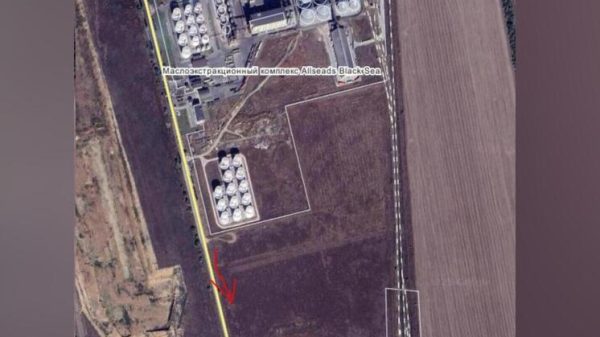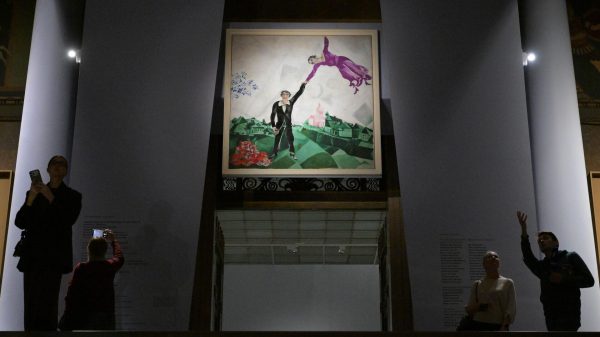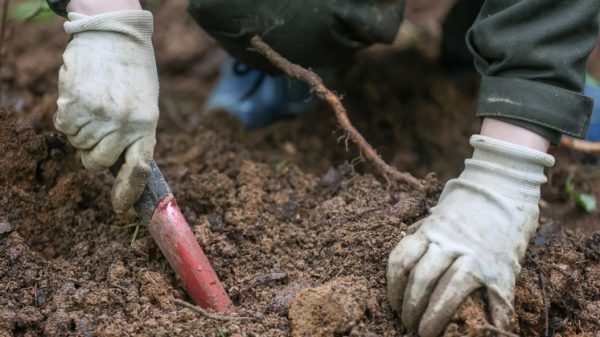The Thermopolium of Regio V, one of the oldest snack bars in Pompeii
Credit: Luigi Spina/Luigi Spina
Archaeologists excavating a snack bar in the ruins of Italy’s Pompeii have uncovered “exceptional” frescoes, and obscene graffiti likely directed at the establishment’s seventh century owner.
The volcanic ash which buried the town during the eruption of Mt Vesuvius in AD79 has preserved an intimate historical record of the Roman town 14 miles southeast of Naples, and the lives of its 13,000 inhabitants.
One of these inhabitants was called Nicias and was likely a freed slave from Greece, according to excavators who recently uncovered an inscription insulting the man.
“NICIA CINAEDE CACATOR” reads the scrawled graffiti on a fresco of a chained dog painted onto the bar of the Thermopolium of Regio V, a cheap street food eatery.
“An inverted s****er” is how archaeologists rendered the slur, though the adjective carries a homosexual connotation from its derivation from the ancient Greek term for catamite.
“NICIA CINAEDE CACATOR” reads the scrawled graffiti on a fresco
“This was probably left by a prankster who sought to poke fun at the owner, or by someone who worked in the thermopolium,” the archaeological park said in a statement highlighting the full range of scientific study that has been applied to understanding the crude inscription and its surrounding context.
“The materials which have been discovered have indeed been excavated and studied from all points of view by an interdisciplinary team composed of professionals in the fields of physical anthropology, archaeology, archaeobotany, archaeozoology, geology and vulcanology,” said Massimo Osanna, head of the Pompeo archaeological park.
Over the years, archaeologists at Pompeii have excavated more than 80 thermopolia, Latin for hot drinks counters, an ancient version of Italy’s “tavole calde,” selling ready-to-eat meals popular among the working classes.
A partial excavation of the Regio V last year uncovered a spectacular fresco depicting blood-soaked gladiators in combat, and the latest artworks revealed include a nymph riding a sea-horse, mallard ducks hanging ready for the pot and a live rooster.
Duck bones were found alongside the avian frescoes, suggesting that at least some of the well-preserved paintings depicted available menu items. Archaeologists also found remains of goats, pigs, fish and snails, illustrating a wide variety of food on sale.
Human remains were also found, alongside the bones of a tiny dog, which archaeologists said was evidence of selective breeding for size.
The site will be opened to the public in the near future, Italian Culture Minister Dario Franceschini said on Saturday. "It will be an Easter present for visitors,” he said.

















































Свежие комментарии